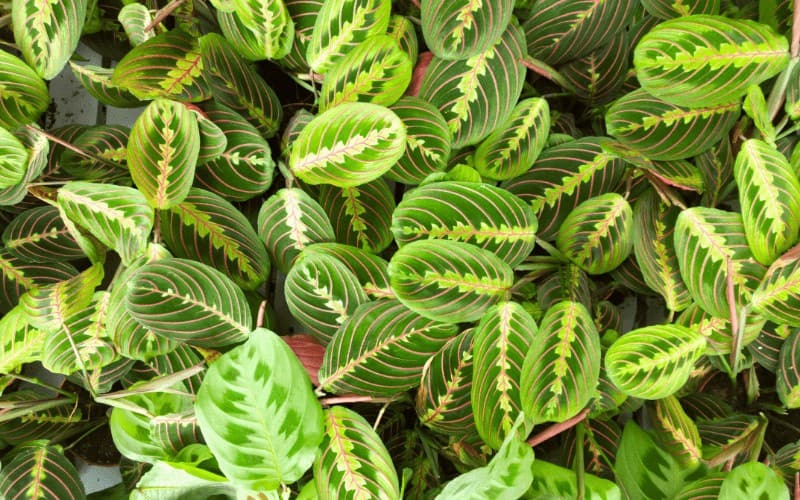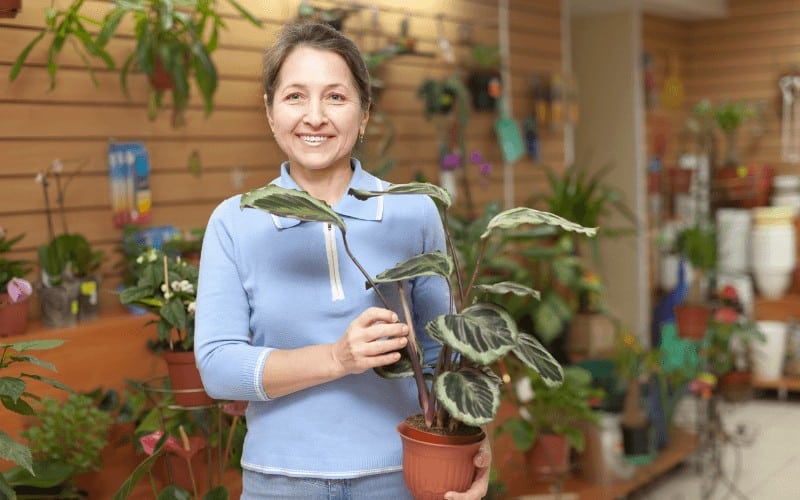If you’ve lost your appetite for drab plants, you may consider nurturing Maranta vs Calathea since they both have flamboyantly styled-leaves.
But how well do you know these plants?
Many people refer to them as prayer-plants, but they are only telling half the truth.
Both plants belong to the arrowroot family, Marantaceae, but only the Maranta plants are true prayer-plants.
Honestly, there are so many misconceptions hovering around these plants because they are closely related.
And that is the essence of this article today: The Maranta plant vs Calathea plant. To wipe misjudgment and restore the epiphany of both tropical understory plants.
Let's get started!
Table of Contents
Maranta Vs Calathea: Key Similarities and Differences

I know you have so many questions you want to get off your chest right now regarding the differences between Maranta vs Calathea plants.
Hey, relax! Don’t get all antsy because we have ALREADY provided ALL the answers you seek below.
But before we go any further, let’s clarify the terms.
We mentioned the “Marantaceae plant family” earlier right?
Well, it is an arrowroot family of flowering plants that consist of 31 genera and about 530 species – including Maranta and Calathea genera – mostly found in lowland tropical forests of Africa, Asia, and The Americas.
They are commonly called the prayer-plant family. Genera of these families usually have underground rhizomes or tubers.
Also, their leaves are arranged in two rows with the petioles having a sheathing base, while the leaf blade is narrow or broad with pinnate veins running parallel to the midrib.
Lastly, the term prayer plant got its name because it opens up in the day and closes in the evening. The upward, folded appearance of the leaves at night looks like a pair of praying hands.
Now let’s proceed!
Maranta Plant Vs Calathea Plant | Appearance and Behavior

Calathea, also called rattlesnake plant or peacock plant is a genus of popular houseplants that you can grow both indoor and outdoor. The plants got those names because of its iconic marking on their glamorous foliage.
Their leaves are brightly adorned, it almost looks as if patterns were painted on them, as seen with the rattlesnake. Furthermore, the leaves are hard and stand stiffly away from the main plant.
But keep in mind they’re NOT the same as prayer-plants. This is because Calathea does not have that nastic movement.
The change in temperature, humidity, and other factors might slightly alter their position. But they NEVER perform the Nyctinasty rituals.
Aside from that, Calathea’s leaves come in a wide variety of forms – rounded, oval (like Maranta), and even lance-shaped – depending on the species.
Maranta, on the other hand, is a TRUE prayer plant because it performs Nyctinasty. During the day the leaves are open and as the sun sets, the leaves fold up as if they were “praying”.
Maranta species are low-growing plants just like Calathea, but it’s a prostrate evergreen species from rhizomes that grows up to 12-15 inches (30-38 cm.) tall.
Their splendid foliage is mainly oval-shaped with about 5-inch (13 cm.) long olive-green leaves – baring prominent red midribs and veining in a herringbone design.
Also, the center of their leaves is ALWAYS lighter green as well as the undersides.
You can grow both plants outdoors only in USDA zones 9-11 but are considered houseplants in other regions.
Lastly, Maranta is more tolerant of cold than Calathea, which will suffer when temperatures fall below 60 degrees F. (16 C.).
Difference Between Maranta And Calathea | Maintenance And Care
Both species of Marantaceae are also different in their growth habit.
In most cases, Maranta plants grow hale and hearty in a hanging pot, so that their spreading stems can dangle appealingly.
As for Calathea, they are shrubbier and will stand upright in a container. However, both plants love low light and average moisture. You can use diluted water or fill your watering container the night before so it can off-gas.
Both Calathea and Maranta are prey to certain insect pests like spider mites, mealy bugs, aphids, and more.
Lastly, both species have been known as being a bit finicky, requiring great care and attention to their need.
But once they are established and happy in a corner of the home, just let them be. They will congratulate you with plenty of beautiful foliage.
You may also wish to read the following posts:
- Herbaceous Vs Woody Plants
- Virginia Creeper Vs Poison Oak
- Deciduous Trees Vs Coniferous Trees
- Differences Between Citronella Plant And Lemongrass
Conclusion
Nyctinasty is the core trait that genuinely differentiates Maranta vs Calathea.
While Calathea leaves resemble the skin of a rattlesnake, with a pretty bold underside leaf color (usually purple); Maranta has red midribs and veinings with a lighter green underside.
The Leaf shape is another visual cue. But both plants are found in jungles, usually at the base of trees.




